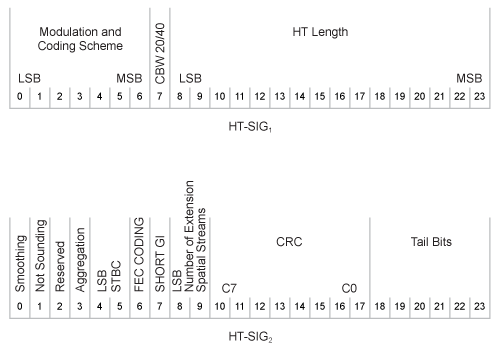wlanHTSIG
Generate HT-SIG waveform
Description
[___] = wlanHTSIG(
generates an oversampled HT-SIG waveform with the specified oversampling factor.
For more information about oversampling, see FFT-Based Oversampling.cfg,OversamplingFactor=osf)
Examples
Input Arguments
Output Arguments
More About
Algorithms
References
[1] IEEE Std 802.11™-2012 IEEE Standard for Information technology — Telecommunications and information exchange between systems — Local and metropolitan area networks — Specific requirements — Part 11: Wireless LAN Medium Access Control (MAC) and Physical Layer (PHY) Specifications.
Extended Capabilities
Version History
Introduced in R2015b
See Also
1 IEEE Std 802.11-2012 Adapted and reprinted with permission from IEEE. Copyright IEEE 2012. All rights reserved.

